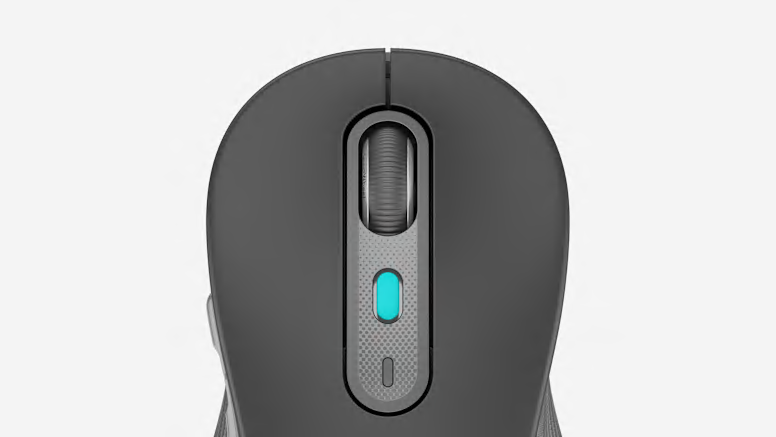For decades, the evolution of gaming has been primarily measured by what we see on screen—photorealistic graphics, sprawling open worlds, and complex game physics. The hardware we used to interact with these worlds, our mice, keyboards, and controllers, were largely seen as passive tools, simple conduits for our commands. However, a profound shift is underway. The latest wave of AI in Gaming Gadgets News reveals a new frontier where artificial intelligence is being embedded directly into our peripherals, transforming them from simple input devices into intelligent partners. This revolution isn’t just about smarter NPCs or more efficient game engines; it’s about creating a symbiotic relationship between player and hardware, where technology anticipates our needs, enhances our skills, and deepens our immersion in ways previously confined to science fiction.
This article delves into the burgeoning world of AI-powered gaming gadgets. We will explore how AI is fundamentally altering the design and functionality of everything from headsets to haptic suits, examine the core technologies driving this change, and discuss the broader implications for both casual players and esports professionals. Prepare to look beyond the pixels and discover the intelligent hardware that is shaping the future of interactive entertainment.
The Dawn of Intelligent Peripherals: More Than Just Inputs
The modern gaming setup is becoming an ecosystem of interconnected, intelligent devices. The news is no longer just about faster processors or higher resolution screens; it’s about the integration of machine learning and neural networks into the very tools we hold in our hands. This evolution is turning passive hardware into active participants in our gaming experience, a trend dominating headlines across tech and gaming media.
AI-Enhanced Mice and Keyboards
For years, the pinnacle of mouse and keyboard technology was mechanical precision and customizable macros. Today, AI is introducing a new layer of dynamic intelligence. Companies are developing mice with onboard processors capable of running machine learning models that analyze player movements in real-time. Imagine a mouse that subtly adjusts its DPI (dots per inch) sensitivity based on the in-game context—lowering it for precise sniper shots and increasing it for frantic close-quarters combat, all without manual intervention. This isn’t about automated cheating; it’s about creating a seamless extension of the player’s intent. The latest AI Sensors & IoT News highlights the integration of gyroscopes and accelerometers that, when paired with AI, can detect signs of player fatigue or frustration through minute changes in grip and movement, potentially offering feedback to help improve performance and well-being.
Smart Audio: AI-Powered Headsets and Speakers
Audio has always been a critical component of immersive gaming, but AI is making it smarter and more personalized. The most prominent example is AI-driven noise cancellation. Technologies like NVIDIA’s RTX Voice use dedicated AI processors to eliminate background noise from a player’s microphone with stunning accuracy, a feature that has cross-pollinated into the world of AI Office Devices News for crystal-clear remote meetings. Beyond communication, AI Audio / Speakers News reports on headsets that can create personalized HRTF (Head-Related Transfer Function) profiles by analyzing a user’s ear shape, delivering hyper-realistic 3D spatial audio. Furthermore, onboard AI can dynamically equalize sound in real-time, amplifying critical audio cues like enemy footsteps or distant gunfire while dampening distracting ambient noise, offering a tangible competitive advantage.
Haptics and Feedback: Feeling the Game with AI
Immersion is about more than just sight and sound; it’s about feeling. AI is revolutionizing haptic feedback. Instead of generic rumbles, AI-powered haptic vests and suits can interpret in-game events to generate nuanced, directional feedback. An explosion to your left doesn’t just shake the controller; it sends a precise ripple of sensation across the left side of your torso. This technology, often featured in Wearables News, uses machine learning to translate a vast array of game data—from the pitter-patter of rain to the recoil of a weapon—into believable physical sensations. This trend is also influencing AI in Fashion / Wearable Tech News, as designers explore how to integrate smart, responsive fabrics into everyday clothing, a concept pioneered in the gaming space.
Under the Hood: The Technology Powering AI Gaming Gadgets

The intelligence within these new gaming gadgets isn’t magic; it’s the result of sophisticated hardware and software working in concert. Understanding these core technologies is key to appreciating their impact and potential, from enhancing gameplay to creating more accessible experiences for all.
The Rise of Edge AI in Gaming
The secret to the responsiveness of these smart peripherals is Edge AI. Unlike cloud-based AI that requires sending data to a remote server for processing, edge computing performs calculations directly on the device itself. For gaming, where millisecond latency can mean the difference between victory and defeat, this is non-negotiable. The latest AI Edge Devices News is filled with announcements of new, powerful, yet energy-efficient NPUs (Neural Processing Units) designed specifically for peripherals. A gaming mouse with an onboard NPU can analyze movement patterns and predict user intent instantaneously, without the lag of a round trip to the cloud. This principle of localized, real-time processing is the same one driving advancements in Autonomous Vehicles News, where split-second decisions are critical for safety and performance.
Sensors, Data, and Machine Learning Models
AI is fueled by data, and modern gaming gadgets are packed with sensors to collect it. High-precision optical sensors in mice, biometric sensors in controllers measuring heart rate and galvanic skin response, and eye-tracking cameras in VR headsets all provide a continuous stream of information about the player. This data is then fed into machine learning models. For instance, as covered in AR/VR AI Gadgets News, AI-powered foveated rendering uses eye-tracking data to render the part of the screen you’re looking at in full resolution while lowering the quality in your periphery, significantly boosting performance. This synergy between hardware and software is also a hot topic in AI-enabled Cameras & Vision News, as cameras become more than just capture devices, evolving into perceptive tools that understand a scene.
AI for Accessibility and Personalization
One of the most powerful applications of AI in gaming hardware is in improving accessibility. The latest AI for Accessibility Devices News showcases adaptive controllers that use AI to learn a player’s unique range of motion and physical capabilities. These devices can then create custom control schemes, remapping complex inputs to simpler gestures or voice commands. This goes beyond simple button remapping; the AI can understand intent, allowing for fluid and intuitive control for players with disabilities. This intersection of gaming and health is also reflected in Health & BioAI Gadgets News, with devices using biometric feedback to help players manage stress and anxiety during intense gameplay, promoting healthier gaming habits.
The Broader Ecosystem: AI’s Ripple Effect Beyond the Game
The innovations born from the high-stakes, performance-driven world of gaming rarely stay confined to it. The technologies being developed for AI gaming gadgets are already having a significant impact on other industries, from professional creative work to the future of human-computer interaction.
Blurring Lines: Gaming Tech in Professional Worlds
The line between a high-end gaming setup and a professional workstation is becoming increasingly blurred, thanks to AI. The same AI-powered noise cancellation that ensures clear team communication in an online match is now indispensable for remote workers. The precision tracking and predictive modeling in gaming mice are being adapted for complex tasks in CAD software and digital art, a trend closely watched in AI Tools for Creators News. Similarly, the control systems for complex machinery and remote robotics are benefiting from the intuitive, low-latency interfaces perfected for gaming, a crossover point with Robotics News and Drones & AI News, where precise remote operation is paramount.
The Future is Seamless: Neural Interfaces and Companion Devices

Looking ahead, the integration of AI is set to become even more profound. The most forward-thinking reports in Neural Interfaces News discuss the long-term potential of brain-computer interfaces (BCIs) in gaming. While still in early stages, these devices could one day allow players to control games with their thoughts, representing the ultimate low-latency interface. On a more immediate horizon, the concepts explored in AI Companion Devices News and AI Assistants News are finding a home in gaming. Imagine an AI assistant that not only launches your games but also analyzes your performance, suggests training drills, optimizes your PC settings in real-time, and even provides tactical advice based on the current game state. This could evolve into dedicated AI Personal Robots that manage your physical gaming environment.
Ethical Considerations and the Competitive Landscape
With great power comes great responsibility. The rise of AI in gaming hardware forces the community to confront difficult questions about competitive integrity. Where do we draw the line between an AI-powered tool that enhances a player’s natural skill and one that constitutes cheating? Tournament organizers and game developers are actively debating this. Furthermore, the biometric data collected by these devices raises significant privacy concerns. As covered in AI Security Gadgets News, ensuring this sensitive personal data is securely stored and used ethically is a critical challenge that the industry must address to maintain player trust.
Navigating the AI Gadget Market: Tips for Gamers
For consumers, this new wave of technology is both exciting and potentially confusing. Distinguishing between genuine, game-changing innovation and marketing hype is crucial. Here are some practical considerations for anyone looking to invest in AI-powered gaming hardware.
Benefits of Early Adoption

For those willing to invest, the advantages can be significant. AI-enhanced peripherals can offer a tangible competitive edge through faster response times and more intelligent feedback. They provide deeper immersion by creating more personalized and responsive audio-visual and haptic experiences. Ultimately, these devices promise a more intuitive and seamless connection between the player and the game.
Potential Pitfalls and Considerations
The most obvious drawback is cost, as these cutting-edge gadgets command a premium price. It’s also vital to be a discerning consumer. Many products may label a simple algorithm as “AI,” so it’s important to research the underlying technology. Is it running on a dedicated NPU? Does it offer tangible benefits backed by reputable reviews? Finally, consider the data privacy policy of any device that collects personal or biometric information.
Best Practices for Evaluation
When considering a purchase, first identify your specific needs. A competitive esports athlete will prioritize latency and performance-enhancing features, while a casual player might value immersion and comfort more. Look for products that emphasize on-device processing (Edge AI) to ensure minimal latency. Finally, investigate the software ecosystem. Great AI hardware is only as good as the software that supports it; look for brands that provide regular updates, customization options, and transparent control over your data.
Conclusion: The Intelligent Future of Play
The narrative of gaming hardware is being rewritten. We are moving from an era of static, passive tools to one of dynamic, intelligent partners. The latest AI in Gaming Gadgets News confirms that artificial intelligence is no longer confined to the virtual world; it is embedded in the very hardware we use to access it. This fusion of human skill and machine intelligence is creating experiences that are more immersive, personalized, and accessible than ever before. From AI-powered audio that gives you a competitive edge to adaptive controllers that open up gaming to new audiences, the impact is undeniable. As this technology continues to mature and intersect with developments in everything from AI Toys & Entertainment Gadgets News to AI Research / Prototypes News, one thing is clear: the future of gaming is a collaborative dance between player and peripheral, and we are just beginning to learn the steps.









